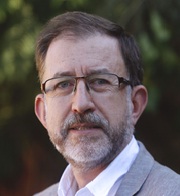
Nelson R. Pinto
University of the Andes
Chile
Title: Leukocyte-Platelet Rich Fibrin Membrane (L-PRF) alone or associated with a biomimetic implant surface act as a biological scaffold for hard and soft tissue regeneration
Biography
Biography: Nelson R. Pinto
Abstract
Leukocyte- and Platelet-Rich Fibrin (L-PRF) is one of the four main families of platelet concentrates for surgical use. L-PRF is used to improve healing and promote tissue regeneration. Blood sample is taken without anticoagulant and immediately centrifuged to obtain a L-PRF clot that can be used directly or compressed into a membrane without damaging the cells and growth factors content. The L-PRF clot or membrane contains most of the platelets and leukocytes present in the initial blood harvest plus the platelet growth factors and stem cells that are also trapped within the fibrin network. With this architecture, L-PRF is the source of a strong and slow release of growth factors such as TGF-b1, VEGF, IGF-1, FGF, EGF, PDGF-AB, IL-1ß for more than three weeks in vitro. Through the release of these growth factors trapped within the fibrin gel or through the production of new molecules by the leukocytes, the L-PRF membranes have strong effects on the stimulation of the proliferation of most cell types (fibroblasts, keratinocytes, pre-adipocytes, osteoblasts, bone mesenchymal stem cells) and on the differentiation of the bone cells.The possibility to use L-PRF as a biological scaffold by itself or associate with a biomimetic implant surface as open the opportunity to regenerate soft and hard tissue in such a way that was not possible before. The clinical, immunohistochemestry and histological findings (SEM, Confocal Laser, and Optical Microscopy) of our animals and humans studies over the last 14 years confirm the potential of L-PRF as a biological scaffold for hard and soft tissue regeneration in acute or chronic wounds. What we thought impossible yesterday, could be routine tomorrow… “Natural Guided Regeneration with L-PRFâ€.
